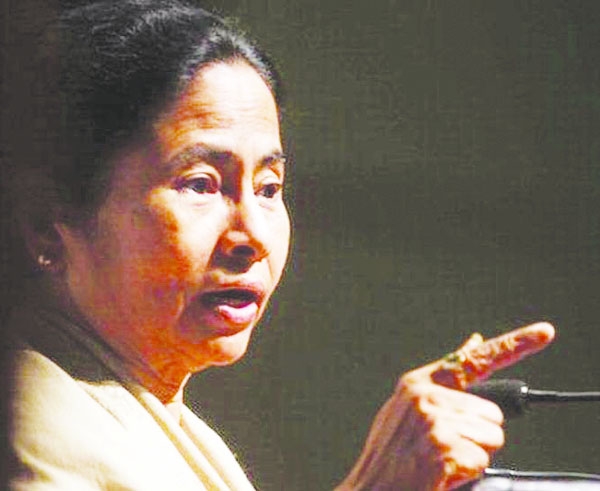
BBC Online :
On a sweltering afternoon, India’s Prime Minister Narendra Modi is working the crowd at a campaign meeting, some 160km (99 miles) south of the eastern city of Kolkata in West Bengal state.
“You gave her an opportunity to work for 10 years. Now give us a chance,” Mr Modi says. The woman in question is Mamata Banerjee, the firebrand leader of Trinamool
Congress (TMC), a regional party that has been ruling the state for a decade. Now Mr Modi, a folksy orator, slips into thickly accented Bengali, much of the amusement of many in the crowd. He launches into a broadside against Ms Banerjee, who is better known in Bengal as “didi” or elder sister, a moniker invented by her supporters.
“Didi, o Mamata didi. You say we are outsiders. But the land of Bengal doesn’t regard anyone as an outsider,” says Mr Modi. “Nobody is an outsider here.”
Ms Banerjee has framed the challenge from Mr Modi’s Hindu nationalist Bharatiya Janata Party (BJP) as one between the insiders (Bengalis) and the outsiders (the largely Hindi-speaking BJP, which runs the federal government).
The 66-year-old leader is tapping into, at once, nativist and federalist sentiments. The “othering” of a powerful federal party is grounded in India’s contested politics of federalism, says Dwaipayan Bhattacharya, a professor of political science at Jawaharlal Nehru University. Ms Banerjee has also accused the Hindu nationalist party of trying to bring “narrow, discriminatory and divisive politics in Bengal”.
Rhetoric aside, the battle for West Bengal – where voting is staggered over eight phases and four weeks – promises to be intense. (The results of voting will not be announced until 2 May, along with four other states, including neighbouring Assam.) It is also the most significant state election in India in recent years.
West Bengal, a state of 92 million people, has never been ruled by Mr Modi’s party.
The feisty Ms Banerjee stormed to power in 2011 after dislodging a Communist-led government that ruled the state for 34 years. Since then she has ruled without a break, and her party currently holds 211 of 295 seats in the outgoing state assembly. The TMC is a loosely structured, and not a particularly disciplined party. It has no ideological underpinnings. Like most of India’s regional parties, it relies on the cult of personality of a charismatic leader, whose supporters also call her the “fire goddess”.
During the last assembly election in 2016, the BJP won a paltry three seats. In the parliamentary poll in 2019, it threw down the gauntlet, picking up 18 of the state’s 42 parliamentary seats and 40% of the popular vote. Ms Banerjee’s party won 22 seats, down a dozen seats from the 2014 ballot, and was badly bruised.
“It was a wake up call for Ms Banerjee,” says Rajat Ray, a political commentator. “2021 is her existential battle”.
A win for the BJP in West Bengal will be a major boost to the party. Although Mr Modi continues to be India’s most popular leader, his party has been struggling to win state elections. Also, a win for a Hindu nationalist party in a state where a third of the voters are Muslims will be hugely symbolic. It will almost also extinguish any hope that India’s largely rag-tag opposition harbours to take on Mr Modi’s well-oiled and richly funded party in 2024 general elections.
“This election is a war for Indian democracy. If the BJP wins, Hindu majoritarian politics will have finally arrived in Bengal, a veritable last bastion,” says Prashant Kishore, a political strategist, who is helping Ms Banerjee’s campaign.
If Ms Banerjee wins, she is likely to emerge as a national leader because she would have defeated a powerful incumbent national party.

